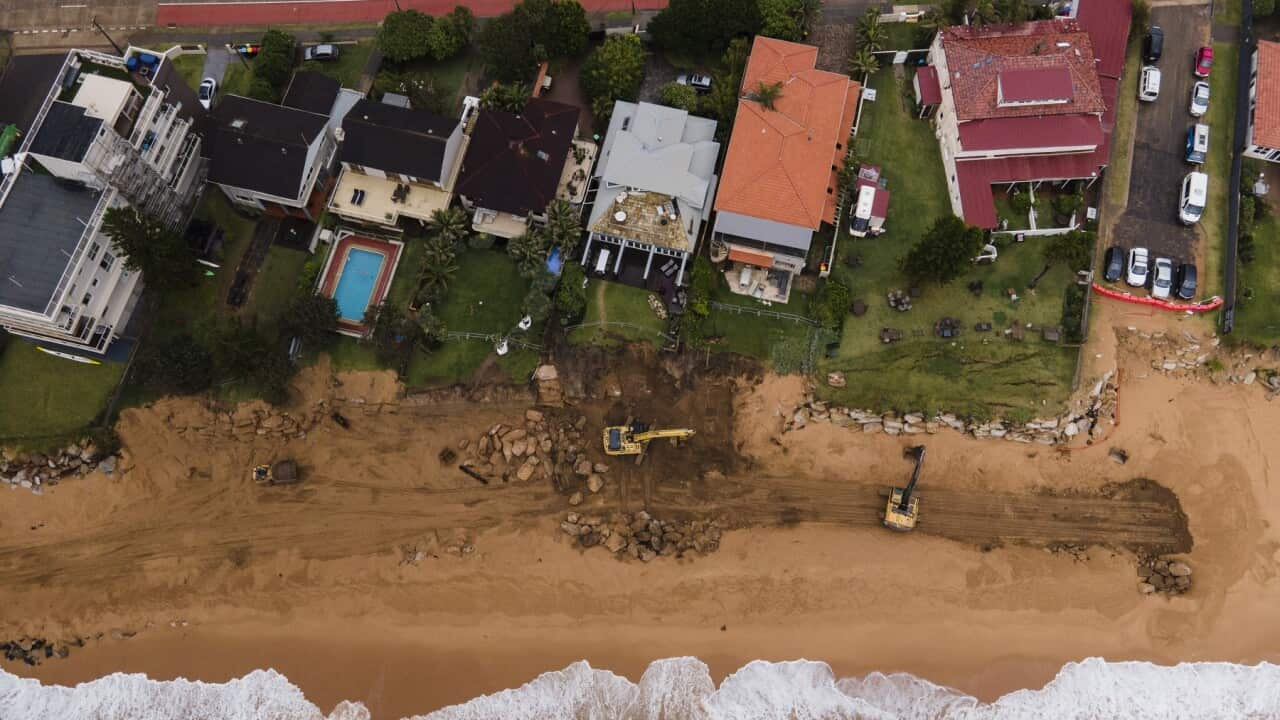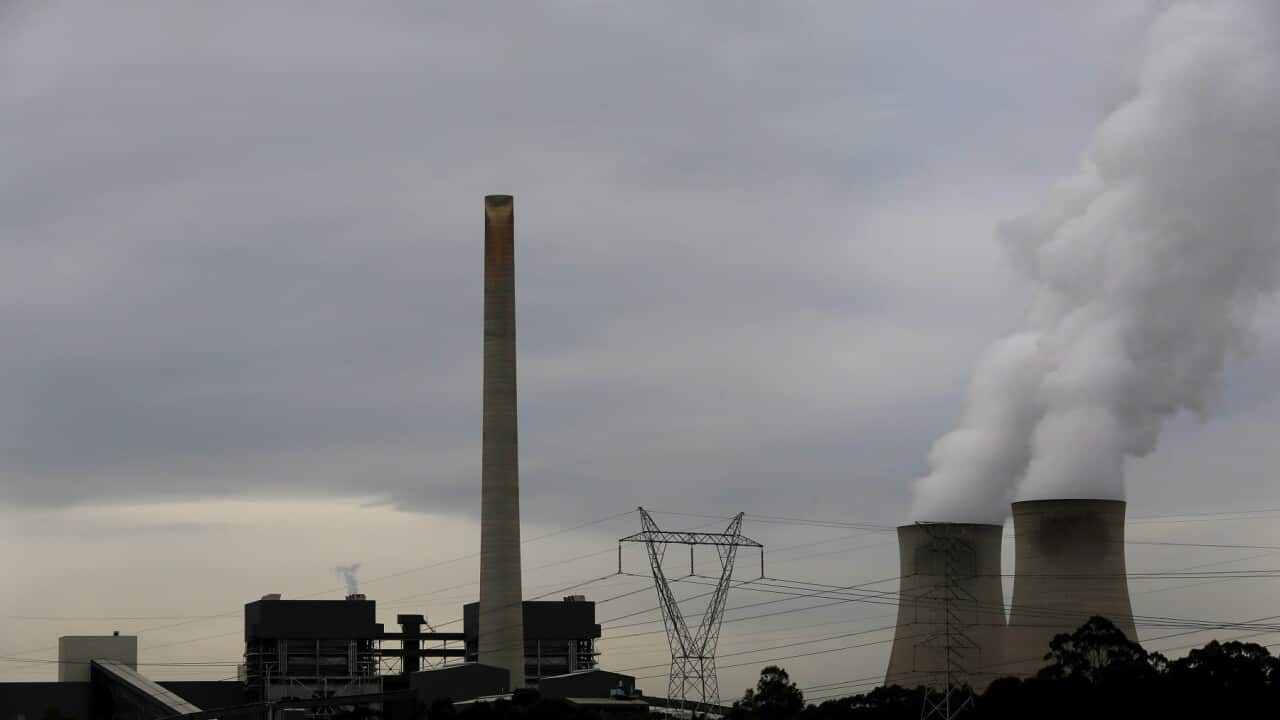TRANSCRIPT
The 2024 State of the Climate Report has found that the Australian climate continues to change, with more extreme heat events, longer and more volatile fire seasons, more intense rainfall, and rising sea levels.
The biennial report released by the CSIRO and the Bureau of Meteorology assesses long term trends in Australia's climate and weather and this year warns that the current trajectory of weather patterns and emissions levels mean hotter days and harsher conditions are ahead.
Dr Karl Braganza is the Manager of Climate Monitoring at the Bureau of Meteorology.
He says much of the warming projected can no longer be reversed.
“This warming is largely now locked in; it's due to greenhouse gases that have already accumulated in the atmosphere and those greenhouse gases will continue to warm the oceans in particular over the next couple of decades.”
The report shows that since 1900, sea levels have risen by 22 centimetres, with around half of that occurring since 1970.
Dr Jaci Brown is the Research Director for the Climate Intelligence Program and the lead of CSIRO’s Climate Science Centre.
She says the warming and rising of the ocean is not only a concern for small island nations.
“Things when they're warmed, expand, and that's true for water as well. So about a third of the sea level rise that we're seeing is just purely from the oceans warming up. The sea level rise doesn't rise evenly all around the globe. Some of the sea level rise matches where the warming is, off that southeast coast of Australia and it's not just simply go to the beach and look at 22 centimeters higher, the increase in sea level changes the coastal inundation; put it on top of king tides and storm swells on coasts that are vulnerable, that are not really made of rock that can erode and we are looking at some really serious concerns over this century.”
Rising temperatures in the ocean have sped up in recent decades, with the warmer temperatures causing it to become more acidic.
The acidification of the ocean is sometimes called Osteoporosis of the sea, creating conditions that eat away at the minerals used by oysters, clams, coral and other marine life to build their shells and skeletons.
Derk Manzello is the Coral Reef Watch Coordinator for the U-S National Oceanic Atmospheric Administration.
During the COP-16 Biodiversity Summit in October, he told reporters that the world may be heading towards a state of chronic coral bleaching.
“Well, as of October 10th, 2024, approximately 77% of the world's reef area has experienced bleaching level heat stress since January 2023. So this is a new record. The previous record was 65.7% of the world's reef areas experienced bleaching level heat stress during the third global coral bleaching event from 2014 to 2017. Whereas during the fourth global bleaching event, we've already gone over that by about 11% in about half the time.”
Ocean acidification is also dangerous for humans, causing harmful algae to multiply faster and contaminate both seafood and the ocean’s ability to store pollutants, including future carbon emissions.
The State of the Climate report says that around half of all CO2 emissions from human activities are absorbed by land and ocean sinks, which act to slow the rate of increase in atmospheric CO2.
As well as more volatile and frequent severe weather events, the State of the Climate report also details how food, insurance, and even our holidays will be impacted by Australians changing weather.
Studies show that the Australian tourism industry alone suffered a $2.8 billion loss during the 2020 Black Summer bushfire season, with almost 7,300 jobs disappearing.
Dr Brown says that even if emissions aren't increasing annually, if Australia continues at the rate it is now, we will exceed our carbon budget limit within seven years.
“We're looking at the sea levels rise. We are looking at the warmer conditions already into the future. An easy way to think about it is what's already happening is going to be exacerbated into the future. So sea levels will continue to rise. Coastal floods becoming more frequent, bringing the marine heat waves. The hot days, it's not just 1.5 warmer than what it used to be when we reached that threshold. We see it play out in more heat waves and that's a particular concern to our health, vulnerable communities, the way we live where we go on holiday.”
Longer bushfire seasons and decreasing rainfall means farming and food production face more challenging conditions, driving up food costs and putting an inevitable strain on both farmers and consumers.
The report finds that increasing temperatures will also exacerbate heat stress on human health and ecosystems, increasing demand for cooling and requiring more resilient infrastructure.
With the cost of living crisis raising questions among young Australians about whether home-ownership is in their future, Dr Brown says that's only one part of the challenge they're facing.
“It's not, I don't think whether they can afford to buy a house. I think for a lot of people it'll be whether they can afford to insure it. So that's sort of some of the flow through effects that yes, we're going to get floods and bush fires. What does that then mean for our economy and where we live and how those, well my kids coming through looking at buying a house, is that even an option for them?”
Dr Braganza says that climate change is an integrated risk and may have some impacts that are yet to be fully realised.
“It means that there's physical impacts from the climate system changing and then there's impacts from those changes flowing through to how our society, economy and other things operate. It is a wicked problem, which means it's quite difficult at this stage to determine how those impacts will fall out and that's concerning. It means that climate change and the rate of change in particular is probably holding some surprises in terms of the impacts that it has across Australia, and it's useful to note that both the averages are changing, so those averages flow through to things like water storages, but the extreme events are also changing, so flood and fire, and so if you're in a community that regularly experiences those perils and hazards, an increase in the frequency of those is probably a more immediate tangible aspect of climate change that Australia will feel in terms of natural disasters and their costs.”
Experts argue that a delay in action on climate change will only make the necessary adaptations more difficult and expensive in the future.
The report finds that building resilience now, and mitigation of emissions to limit future warming, is crucial to protect not just Australia, but the world, from the potential severity of climate change.
Dr Brown says while the task of turning things around will not be easy, it's not something we can afford to ignore.
“It's sobering and it's a tough one, seven years for the whole globe to turn around. If we do go past that, there is still hope to then bring it back to 1.5, but that's a lot harder once the greenhouse gases are out there to bring it back down and some of the effects won't be reversible. So it's very sobering to wonder whether we really will stop at 1.5 degrees, particularly for the more vulnerable countries. So talking to the Pacific Islands for them their logo is, sorry, their motto is 1.5 to stay alive, so 1.5 and the sea level rise that they will see and the changes to their climate. We have Pacific leaders asking us when do we have to leave? So very, very confronting, very, very urgent. We do have the technology out there. I try to remain positive and optimistic that we can pull that together.”













